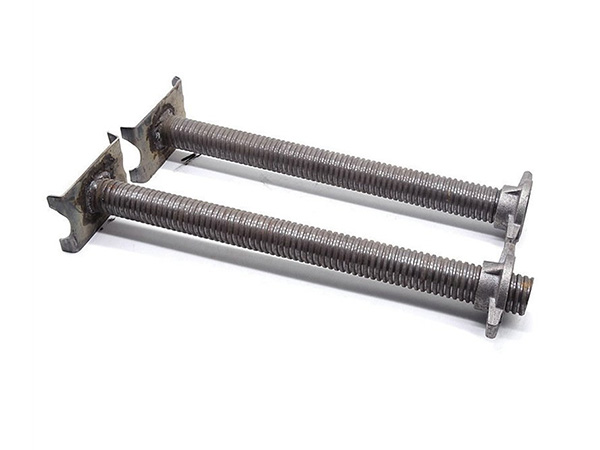- Site Navigation -

Adjusting Screw Rod
An Adjusting Screw Rod(also commonly known as a Threaded Adjuster,Leveling Screw,or Jack Screw)is a specialized fastener designed not just for joining,but for precise positioning,al......
An Adjusting Screw Rod(also commonly known as a Threaded Adjuster,Leveling Screw,or Jack Screw)is a specialized fastener designed not just for joining,but for precise positioning,alignment,leveling,and load adjustment in machinery,structures,and equipment.It functions as a finely tuned mechanical element that allows for controlled linear movement and micro-adjustment through the turning of its threads.
Its primary purpose is to provide a simple,reliable,and accurate method for raising,lowering,or shifting components into their exact desired position and then locking them in place.
Key Features&Design:
Thread Type:Often features finer threads(e.g.,UNC/UNF or metric fine pitch)compared to standard threaded rods.This allows for more precise adjustments per turn.Some high-precision versions may use Acme threads for better load-bearing capability and to prevent binding.
End Configurations:The ends are specifically designed for adjustment and load-bearing:
Pivoting End:Often has a domed or cupped end that seats into a matching depression,allowing the rod to pivot and accommodate slight misalignments without bending.
Machined Flat End:A flat,finished end for direct contact and even load distribution.
Loop End/Eye End:Features a circular hole for inserting a pin or bolt,common in turnbuckles and tensioning systems.
Materials:Typically made from high-strength steel and often heat-treated to withstand significant compression loads.Stainless steel versions are used for corrosion resistance.
Integrated Locking:Many designs incorporate a jam nut or two locknuts on the threaded portion.Once the desired adjustment is made,these nuts are tightened against each other or a surface to lock the setting firmly in place and prevent unintended movement from vibration.
How It Works:The Principle of Micrometer Adjustment
The screw rod acts as a linear actuator:
The rod is threaded through a fixed nut or a tapped hole in a structure.
Clockwise rotation of the rod moves it linearly in one direction(e.g.,extending it,raising a load).
Counter-clockwise rotation moves it in the opposite direction(e.g.,retracting it,lowering a load).
The fine pitch of the threads means many turns are required for a small amount of movement,enabling very fine,precise control over the position.
Once the perfect position is achieved,a jam nut is tightened to lock the rod.
Common Applications:
Machinery Installation:Leveling and aligning heavy machine tools,industrial motors,pumps,and conveyors on their foundations or base plates.
Structural Support:Adjusting the height of structural columns,beams,or pre-fabricated building modules during construction or settling.
Vibration Isolation:Supporting equipment on vibration isolation pads or spring isolators,allowing for height adjustment to ensure even load distribution.
Door and Gate Hardware:Used in pivot sets for heavy doors and gates to adjust the door's vertical height and alignment.
Automotive and Aerospace:Used in suspension systems,throttle linkages,and control surfaces for fine adjustments.
Furniture and Display:Leveling the legs of heavy workbenches,industrial shelving,and museum display cases.
Advantages:
Precise Control:Allows for extremely fine,micrometer-like adjustments to achieve perfect alignment and level.
High Load Capacity:Designed to support substantial weight,often in compression.
Stability:Once locked with a jam nut,the adjustment is highly resistant to vibration and movement.
Simplicity:Provides a simple,mechanical,and reliable solution for adjustment without the need for complex hydraulics or electronics.
Installation Overview:
Positioning:The adjusting screw is placed in its mounting point(e.g.,through a hole in a base plate).
Rough Adjustment:The rod is hand-turned to bring the component to the approximate height.
Fine-Tuning:Using a wrench or a spanner on the jam nut flats(if present),the rod is turned slowly for final,precise leveling.A spirit level is used to check.
Locking:Once positioned correctly,the jam nut(s)are tightened firmly against the mounting surface to lock the rod's height and prevent any rotation.








